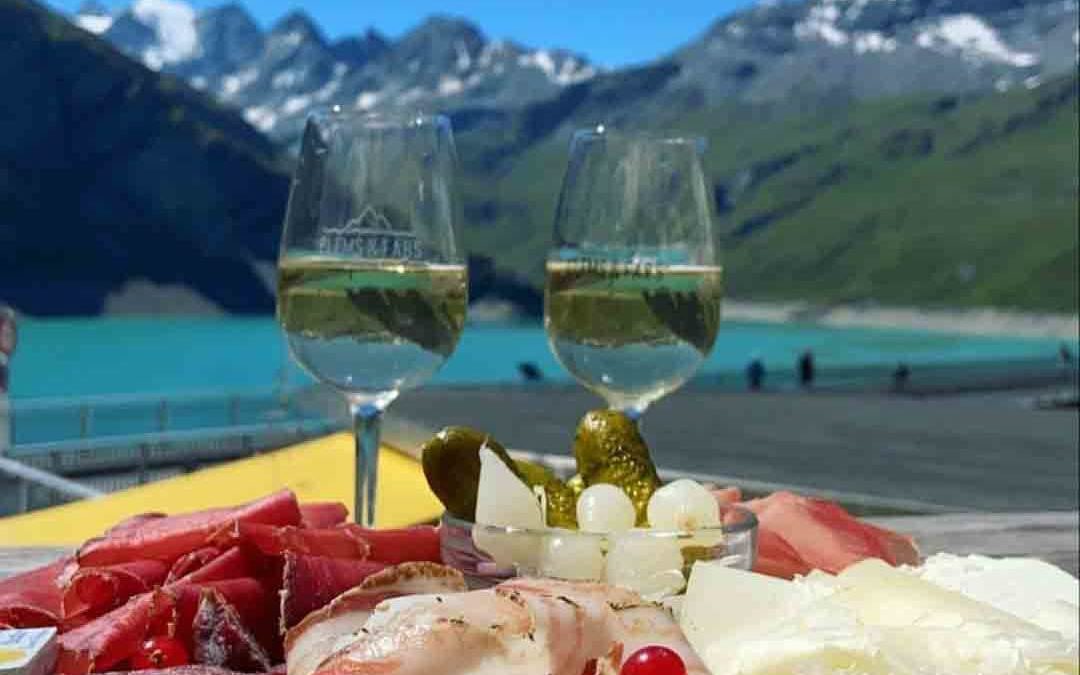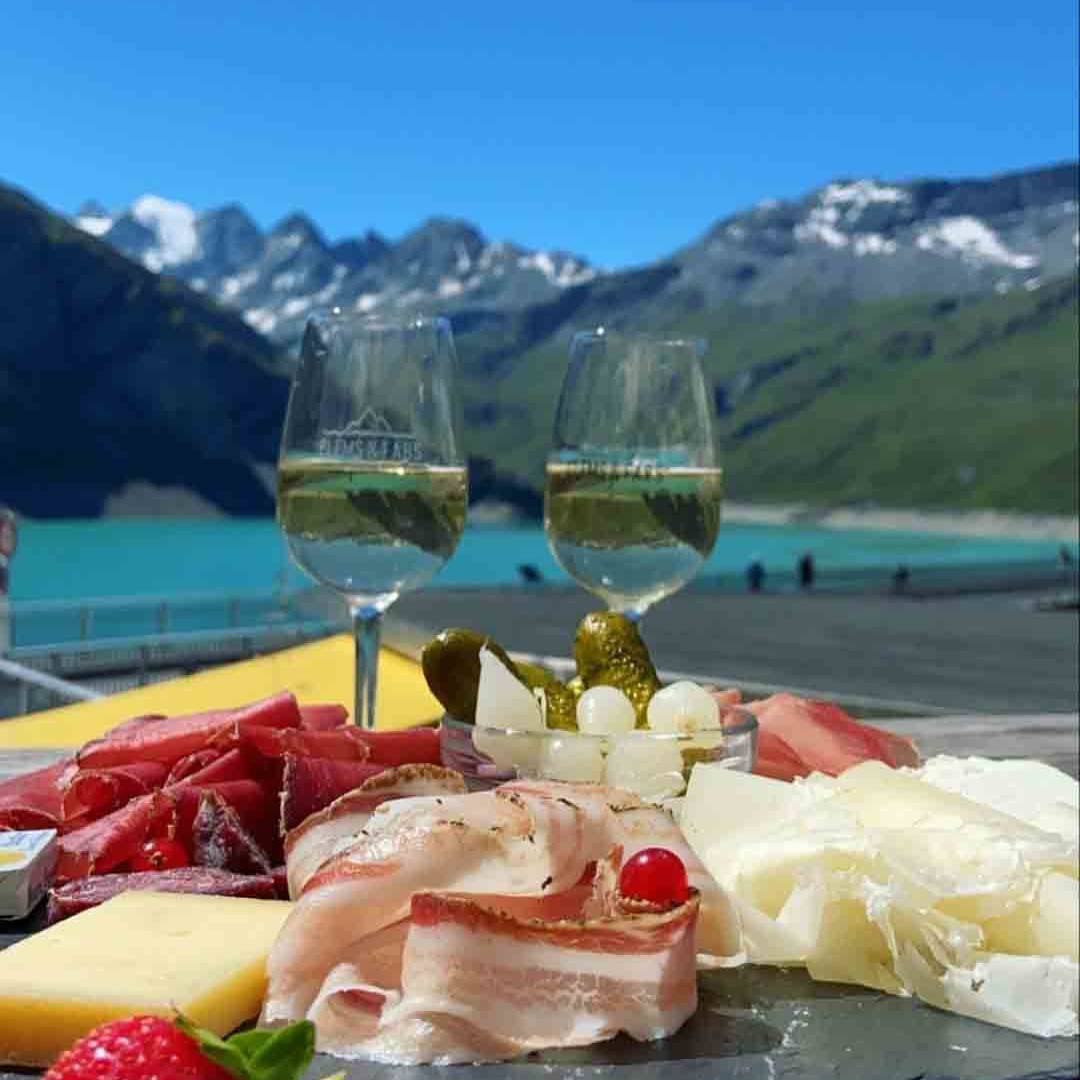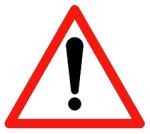
Restaurant du barrage de Moiry





Il faut savoir qu’en altitude, lorsque le mauvais temps arrive, en général il ne pleut pas, il neige. Or, la neige, surtout quand elle est froide, ne mouille pas. En revanche il fait froid.
Donc, ce qu’il faut ce n’est pas tant des vêtements qui protègent de l’humidité extérieure mais des vêtements qui permettent à la transpiration de s’évacuer pour que le corps reste sec et puisse mieux supporter le froid.
S’il pleut, c’est que l’on se trouve à une altitude moindre, donc plus prêt d’un refuge ou du fond de la vallée, et donc le fait d’être mouillé de l’extérieur a moins d’importance.
Privilégiez des vêtements de couleurs vives afin de faciliter les recherches en cas de besoin.
Un dernier conseil :
Toujours avoir au fond du sac une petite pochette dans laquelle seront mis, une cagoule et une paire de gants en soie, une paire de sur-moufles en nylon, une couverture de survie et une paire de lacets de rechange.
Chacun à ses préférences et toujours de bonnes raisons de choisir ceci plutôt que cela. En outre, n’ayant pas utilisé dans le terrain tous les types de vêtements, il ne m’est pas possible d’en faire un inventaire commenté complet. Je vais me contenter d’indiquer quelques principes de base et vous faire part de mes expériences.
Un dernier conseil :
Quels qu’ils soient, ils doivent être chauds, légers, solides et confortables.
When bad weather arrives at altitude, it generally doesn’t rain, it snows. But snow, especially when it’s cold, doesn’t get wet. But it does get cold.
So what you need is not so much clothes that protect you from the damp outside, but clothes that allow perspiration to escape so that your body stays dry and can cope better with the cold.
If it’s raining, it’s because you’re at a lower altitude, closer to a refuge or the bottom of the valley, so being wet from the outside is less important.
Choose brightly coloured clothes to make it easier to find you when needed.
One last tip:
Always keep a small pouch at the bottom of your bag to hold a balaclava, a pair of silk gloves, a pair of nylon overslippers, a survival blanket and a spare pair of shoelaces.
Everyone has their own preferences and there are always good reasons for choosing this over that. What’s more, as I haven’t used all types of clothing in the field, it’s not possible for me to make a complete commented inventory. I’ll just mention a few basic principles and share my experiences with you.
A final word of advice:
Whatever they are, they must be warm, light, strong and comfortable.




High mountain races take place at altitude and require great endurance. Given the strain it puts on the heart, circulatory system, muscles and joints, you need to be in good health and be able to judge your own ability. Avoid being pressed for time and choose a pace that everyone can keep up with.
From 2500 metres upwards, the body needs time to get used to the altitude. It is therefore essential to climb slowly and gradually increase the altitude at which you sleep. If you experience symptoms of altitude sickness (headaches, dizziness, nausea, etc.), the best thing to do is to descend.
Maps, guidebooks, the internet and experts provide information on the length of a route, the gradient, the difficulty and the current conditions. Weather forecasts are particularly important, as storms, snow, wind and cold can greatly increase the risk of accidents. Plan alternative routes too! Before setting off, discuss your plans with all the participants so that everyone is informed. Find out the emergency numbers for mountain rescue services in your country (European emergency number: 112).
Ability, experience, motivation and the size of the group determine the choice of race. Ideally, there should be between 2 and 6 people in the group; any larger and it becomes a risk factor! It is not advisable to set off alone. Tell those close to you about your objective, your route and the time you expect to be back.
Adapt your equipment to your goal and keep the weight of your rucksack to a minimum! A rope and helmet will protect you from slips and falling rocks, and crampons and an ice axe will help stabilise you. Don’t forget sun protection. In an emergency, it’s best to carry a first-aid kit, a bivvy bag/survival blanket, a mobile phone and a headlamp.
As glaciers retreat, snow melts and the zero degree limit rises, the risk of rockfalls and falling into crevasses increases. So it’s important to set off well in advance, constantly assessing the weather and the situation on the ground and adapting your route accordingly.
It can be very difficult to find your way when there is no path, on a glacier or when visibility is poor. So it’s important to know how to use your map, altimeter, compass and GPS. When in doubt, turn back in time!
Snow and ice slopes and rocky ridges require a mastery of belay and rescue techniques. If a climber falls into a crevasse, the roped party can stop the fall. Caution: if you are roped up in steep terrain, you run the risk of a training accident.
Slip or trip and you fall… It’s the main cause of accidents in the mountains! Be aware that fatigue and a fast pace greatly reduce your concentration and the safety of your steps. It takes a lot of practice to know how to use your crampons and ice axe safely.
The high mountains are a precious place to explore a unique wilderness. Enjoy this freedom and respect this fragile environment! Look out for others and help environmental associations and mountain organisations to protect the environment and look after nature.